May 16, 2025 | 03:20 GMT +7
May 16, 2025 | 03:20 GMT +7
Hotline: 0913.378.918
May 16, 2025 | 03:20 GMT +7
Hotline: 0913.378.918
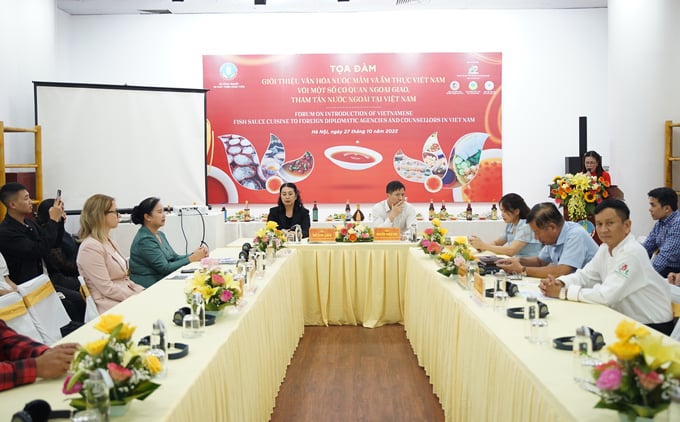
Mr. Nguyen Minh Tien - Director of the Center for Agricultural Trade Promotion and Ms. Ho Kim Lien, President of the Vietnam Traditional Fish Sauce Association chaired the discussion to introduce fish sauce culture and Vietnamese cuisine to a number of organizations. diplomatic missions, and foreign counselors in Vietnam.
On October 27th, the Agricultural Trade Promotion Center, in collaboration with the Traditional Vietnamese Fish Sauce Association and the Vietnamese Culinary Culture Association, organized a Forum on the Introduction of Vietnamese fish sauce cuisine to foreign diplomatic agencies and counselors in Vietnam.
This event was part of the week-long campaign to showcase and connect Vietnamese agricultural and culinary products with the foreign diplomatic network and foreign consuls in Vietnam. The forum aimed to exchange and introduce the culture and culinary values of traditional fish sauce, providing an opportunity for Vietnamese fish sauce and culinary products to enter the international market while promoting and introducing Vietnamese culture to international friends.
During the seminar, Mr. Nguyen Minh Tien, the Director of the Agricultural Trade Promotion Center, mentioned that Vietnam has over 3,260 kilometers of coastline stretching from the North to the South, with 28 coastal provinces and numerous regions producing traditional fish sauce and salt. Some of the noteworthy areas famous for their fish sauce products include Kien Giang, An Giang, and Chau Doc. These products are the result of combining the traditional cultural heritage with scientific and technological innovations, creating products that maintain their traditional character while meeting modern demands. Fish sauce is also a distinguishing factor that sets Vietnamese cuisine apart from that of other countries around the world.
Since 2018, the government has implemented the "One Commune, One Product" program (OCOP), resulting in more than 10,000 OCOP products, with over 70% falling into the category of agricultural and food products. Therefore, in addition to promoting OCOP products in general, the Agricultural Trade Promotion Center is focusing on specific product groups, with traditional fish sauce and salted fish sauce being selected for this particular event.
Regarding the journey of traditional fish sauce, Ms. Ho Kim Lien, the Chairwoman of the Traditional Vietnamese Fish Sauce Association, explained that although they all start by fermenting fish with salt to make fish sauce, fish sauce from different regions in Vietnam has unique characteristics in terms of aroma, flavor, and color.
The creativity of people in different regions has given rise to distinctive methods for producing regional fish sauces.

In the Northern region, which experiences cold winter weather and benefits from the best seasonal fish, their fish sauce, particularly the renowned Cat Hai brand, has a very strong smelt. In contrast, the Central and Southern regions, where there's year-round sunshine, experience only a slight drop in temperature during the rainy season. They also ferment their fish sauce in wooden barrels or cement tanks, but the two regions still have noticeable differences in the color and scent of their fish sauce. These differences arise from using fish caught in different areas and varying the size of the fermentation containers, which can range from 5 to 10 to 50 tons.
"This is what makes Vietnamese fish sauce renowned worldwide. Without traditional fish sauce, it's difficult to prepare iconic Vietnamese dishes like phở, nem (spring roll), bún chả, bánh hỏi, bánh căn, bánh xèo... which make Vietnamese cuisine distinct from the cuisines of European, American, Japanese, Korean, Thai, and other countries," said Ms. Lien.
Representatives of the Traditional Vietnamese Fish Sauce Association recognize that the journey to impart a distinct identity to traditional Vietnamese fish sauce is not a short-term endeavor; it spans years. It is the crystallization of the cultural essence of many generations of Vietnamese people, which has contributed to the creation of uniquely Vietnamese culinary culture. The craft of making traditional fish sauce has received recognition from the Ministry of Culture, Sports, and Tourism as part of the National Intangible Cultural Heritage – Traditional Craftsmanship, Traditional Knowledge in the production of Phu Quoc fish sauce and Nam O fish sauce, acknowledged as national intangible cultural heritage.
From a business perspective, Mr. Le Ngoc Anh, Director of Le Gia Food & Trading Company, shares that the two key words in traditional fish sauce export are "perseverance." He believes this is an activity that requires investment and true perseverance, involving substantial resources, from product development to marketing and promotion, often incurring significant costs.
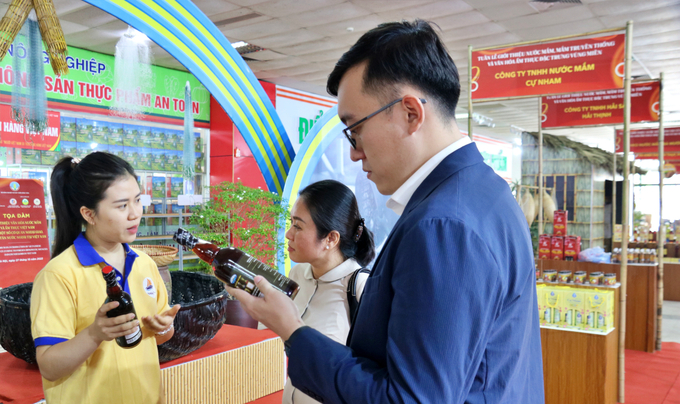
This event was part of the week-long campaign to showcase and connect Vietnamese agricultural and culinary products with the foreign diplomatic network and foreign consuls in Vietnam. Photo: Phuong Thao.
For the export of traditional fish sauce to succeed, the commitment and support of regulatory agencies and trade promotion organizations are of utmost importance. "With limited resources, investing a substantial amount of money to participate in international trade fairs, engage in suitable promotional programs, and promote the search for export opportunities is a challenging endeavor for businesses. Without investment, there can be no export opportunity. It's like the chicken and the egg story," Mr. Le Ngoc Anh explains.
Furthermore, to achieve successful export to distant markets, traditional fish sauce must establish a strong presence in the domestic market. Beyond the story of competition and consumer preferences, the efforts to improve quality and services by traditional fish sauce brands play a significant role. State regulatory agencies also play a crucial part. A clear legal framework, well-defined concepts, quality standards, and support considering the specificities of traditional production (similar to how the world handles cheese and wine) are what the Traditional Fish Sauce Association and producers hope for.
Mr. Le Ngoc Anh also emphasizes that the export of traditional fish sauce is not just an economic or commercial activity; it is also an export of culinary culture.
Translated by Dieu Linh

(VAN) Veterinary training should focus on quality, not just quantity. Veterinarians also need more options to pursue specialized training.

(VAN) The veterinary industry needs to be viewed objectively and further invested in to properly demonstrate its role and importance in the new context.

(VAN) The number of veterinarians graduating each year is not enough to meet actual needs, hence a difficult problem for the growing livestock industry.
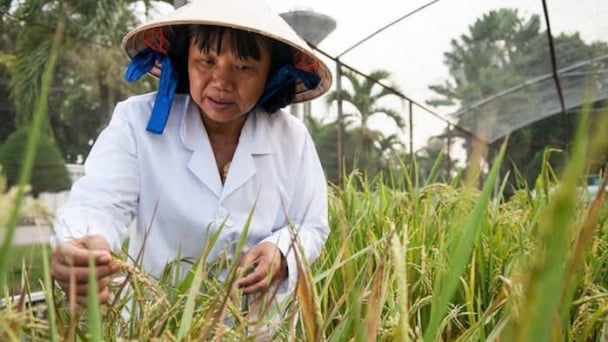
(VAN) The strategic partnership between Cambodia, the Philippines, Vietnam, and CGIAR ensures that innovative solutions effectively address national priorities for food system development.
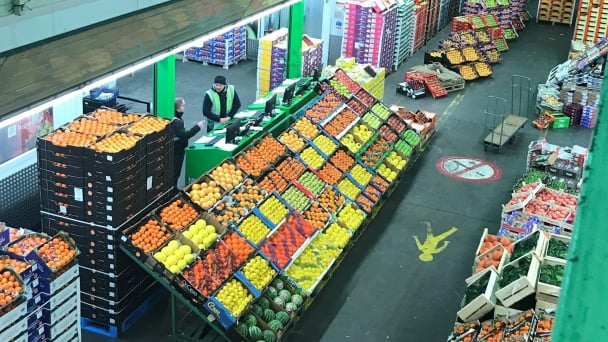
(VAN) This was affirmed by the UK Minister of State at the Department for Environment, Food and Rural Affairs during a working session with Deputy Minister Tran Thanh Nam on May 13.

(VAN) On May 13, the Ministry of Agriculture and Environment, in coordination with the Embassy of Vietnam in the United Kingdom, organized a seminar titled 'Connecting trade in Vietnam-UK agricultural, forestry, and fishery products'.
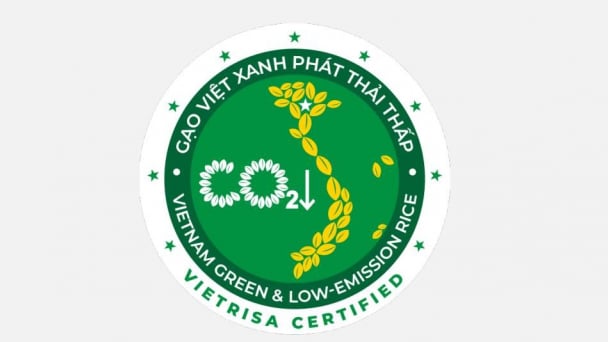
(VAN) The launch of the Vietnam green and low-emission rice brand is a positive signal for both businesses and farmers, marking readiness to reach new heights in the global market.